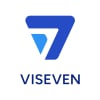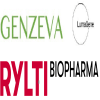Dive Brief:
- Amid intense scrutiny on pharmaceutical innovation and drug value, the industry saw far fewer novel drugs approved by the Food and Drug Administration in 2016 than in years past.
- Only 22 new molecular entities (NME) were approved this year, down substantially from the two-decade high of 45 last year.
- Adding to that poor showing, a new report published earlier this month put the projected returns from pharma's late-stage drug pipeline at a measly 3.7%. Taken together with the falling NME approvals, the report raises questions about the efficiency and success of pharma R&D.
Dive Insight:
The report, compiled by the consulting and accounting firm Deloitte, paints a picture of an industry caught between rising R&D costs on one hand and falling average projected peak sales on the other.
According to Deloitte, the cost to usher a drug from discovery all the way through launch — an elusive and usually controversial figure — stabilized at a little over $1.5 billion this year. At the same time, forecast sales per asset have dropped steadily in recent years, leading to an erosion of the projected returns from late-stage pipelines.
Pricing backlash, coupled with a broad array of treatment options in many primary care areas, puts pharma under even more pressure to deliver clinically meaningful innovations. With that context in mind, BioPharma Dive has been collecting data to compare R&D spending as a percentage of product sales at notable companies to their industry peers.
The following charts show that ratio for the last quarter with publicly available data (Q3), as well as a four-quarter moving average to illustrate spending over a longer time horizon. (BioPharma Dive will publish data on other major companies, such as pharma giants Pfizer and Novartis, in early January.)

All four companies in the chart above have secured approvals for key, high-profile drugs in the past four years (Merck: Keytruda, AbbVie: Imbruvica, Eli Lilly: Trulicity, Bristol-Myers: Opdivo).
But Eli Lilly and Bristol-Myers have been much more aggressive in allocating investment into R&D. While Merck has spent more in dollar terms, both Lilly and Bristol-Myers have channeled a greater portion of their budget towards R&D than their peers. And, impressively, the two have both outspent AbbVie in dollars terms over the last four quarters, despite pulling in significantly less revenue from product sales.
Eli Lilly — hurt by patent expirations for key products like Cialis as well as a tightening market for diabetes — has done particularly well of late. The Indianapolis drugmaker has won approvals this year for Taltz (ixekizumab) and Lartruvo (olaratumab), adding to four other NME approvals in the 2013-2016 time period. Its failure in Phase 3 with the Alzheimer's drug solanezumab is a glaring exception to its string of recent R&D success.
(One note: Bristol-Myers' high four-quarter moving average reflects increased license and asset acquisition costs charged to R&D in the fourth quarter of 2015.)

Among the four mid-major foreign drugmakers above, AstraZeneca stands out. Under pressure to meet CEO Pascal Soriot's lofty $45 billion revenue goal by 2023, the British drugmaker has invested more than $6 billion towards R&D spending over the past four quarters.
Yet, while AstraZeneca has notched wins with approvals for its cancer drug Tagrisso (osimertinib) and the SGLT-2 inhibitor Farxiga (dapaglifozin), the company came up empty in 2016.
Focus in the near-term has turned to the much-anticipated immuno-oncology candidate durvalumab, as well as the BTK inhibitor acalabrutinib that AstraZeneca picked up in its late 2015 acquisition of Acerta Pharma.
BioPharma Dive plans to publish more charts showing R&D spending and dependency on best-sellers in the coming weeks. Stay tuned!
Note on figures: Product sales were used whenever possible to calculate the percentages (rather than revenue) in an effort to help smooth quarterly data and better reflect efficiency of investment. AstraZeneca, for example, has been aggressive recently in selling off assets, resulting in spiky boosts to top-line revenue from externalization revenue.














